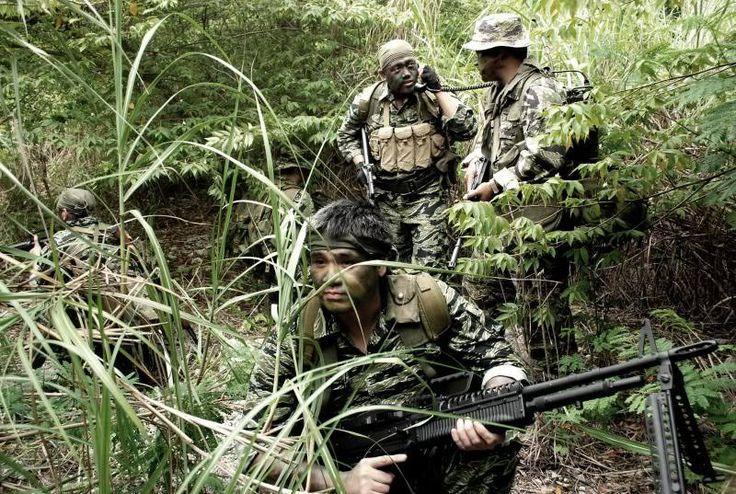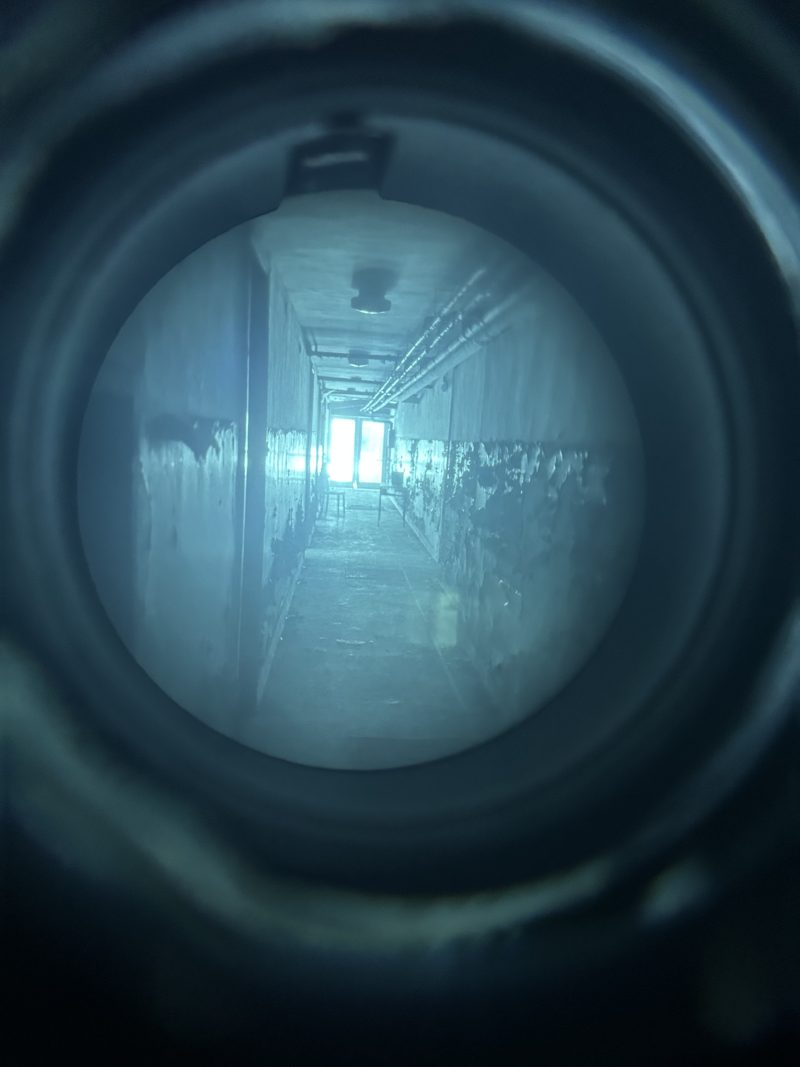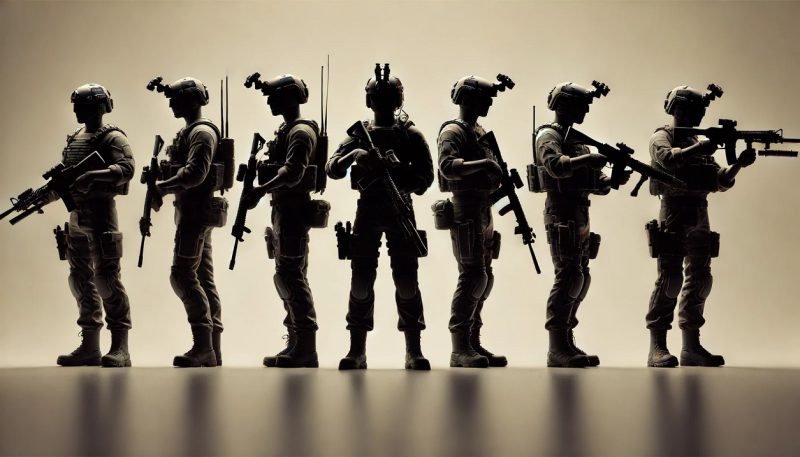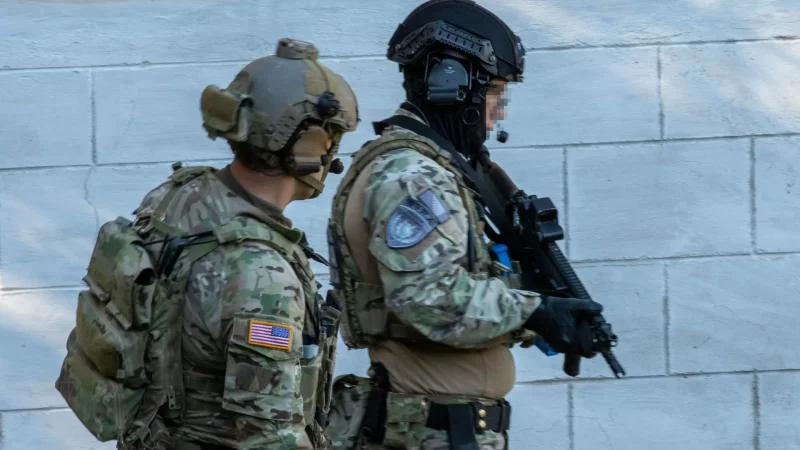The Long Range Surveillance – LRS units of the United States Army. They are employed by Military Intelligence units and are specially trained surveillance units for gathering information from deep within hostile territory – deep behind enemy lines.
Classic Long Range Surveillance unit employment is to infiltrate deep behind enemy lines, into enemy territory, construct a hide site, and provide continuous surveillance/special reconnaissance of an intelligence target of key interest. Long Range Surveillance teams allow 24-hour surveillance and analysis coverage unlike Unmanned Aerial Vehicles (UAVs), manned aircraft, and most satellites usually providing. Assuming they are not compromised, they typically remain in position for up to 5 days, as determined by the available food and water supplies. Long Range Surveillance units operate up to 62 miles (100 kilometres) from the Forward Line Of Troops (FLOT) for a maximum of 5 days regarding regular procedures.
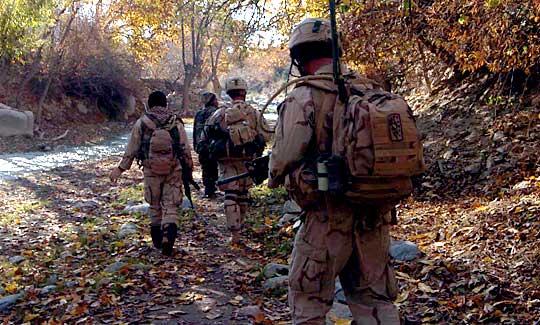
Today’s form of Long Range Surveillance Units (LRSUs) trace their origin to the US Army’s famous Long-Range Reconnaissance Units known also as LRRPs, but unlike the US Army Ranger units, that they are so commonly confused with, Long Range Surveillance Units perform passive intelligence gathering missions, and are not equipped for offensive combat operations but are able to some stuff. Long Range Surveillance Units take great pains to avoid being detected. Long Range Surveillance Units provide US Army divisions, and Corps with the ability to deploy highly-skilled reconnaissance patrols deep into the enemy’s rear, behind enemy lines. Operating as six-man teams, Long Range Surveillance Units teams are trained extensively in long range communications, survival, covert observation, and various infiltration techniques. Many LRSU unit members are qualified in HALO/HAHO and combat diving skills. In certain situations, they may also engage in stay behind operations. Units are capable of being infiltrated on foot, by aircraft, parachute, or small boats. Units may be deployed up to 150 miles behind enemy lines. They are expected to operate on their own, for up to thirty days. Team members are capable of providing bomb damage assessments; directing artillery fire; targeting emery antiaircraft systems for destruction, and locating enemy troop concentrations.
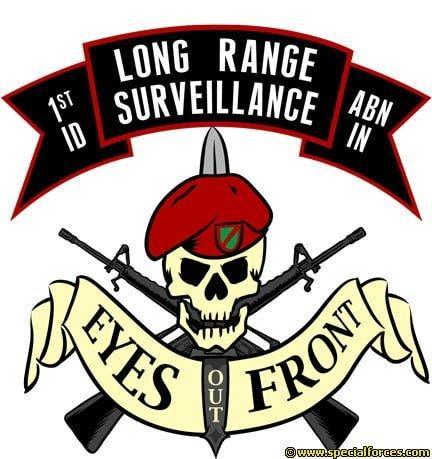
Many Long Range Surveillance Unit members are qualified in HALO/HAHO and combat diving skills. In certain situations, they may also engage in stay behind operations. These units are capable of being infiltrated on foot, by aircraft, parachute, or small boats or whatever takes to go in. Units may be deployed up to 150 miles behind enemy lines under every circumstance. They are expected to operate on their own, for up to thirty days. Team members are capable of providing bomb damage assessments; directing artillery fire; targeting emery antiaircraft systems for destruction, and locating enemy troop concentrations.
Each Army Corps is authorized a Long Rang Surveillance Company (LRSC), and each Division a Long Range Surveillance Detachment (LRSD). Long Rang Surveillance Company’s have a large headquarters plt. a communications plt., and two patrol platoons. Long Rang Surveillance Detachment’s have a smaller number of teams authorized per a patrol plt. Active Army Long Range Surveillance Units are assigned to their parent units military intelligence (MI) unit. Army National Guard Long Range Surveillance Units are assigned to their divisional cavalry squadrons.
Many Long Range Surveillance Units members are graduates of the International Long Range Reconnaissance Patrol School. Based in Germany, the school is jointly funded and staffed by personnel from England, Germany, the USA, and the Netherlands. The US Army also runs a Long Range Surveillance Leaders Course (LRSLC), for Long Range Surveillance Units team leaders and officers. Allied troops and members of other services may attend on a space-available basis. The course is run by Co.D, 4th. Ranger Training Bn. Co-located with the US Army Ranger School, at Ft. Benning, GA., the school’s cadre provides instruction in a wide range of skills. The course includes instruction in techniques for constructing underground hide sites; escape and evasion methods; identifying threat equipment, aircraft and personnel even while camouflaged; improvised long-range communications; basic and advanced field craft, and various other skills. All of this topped off by a realistic field training exercise (FTX).
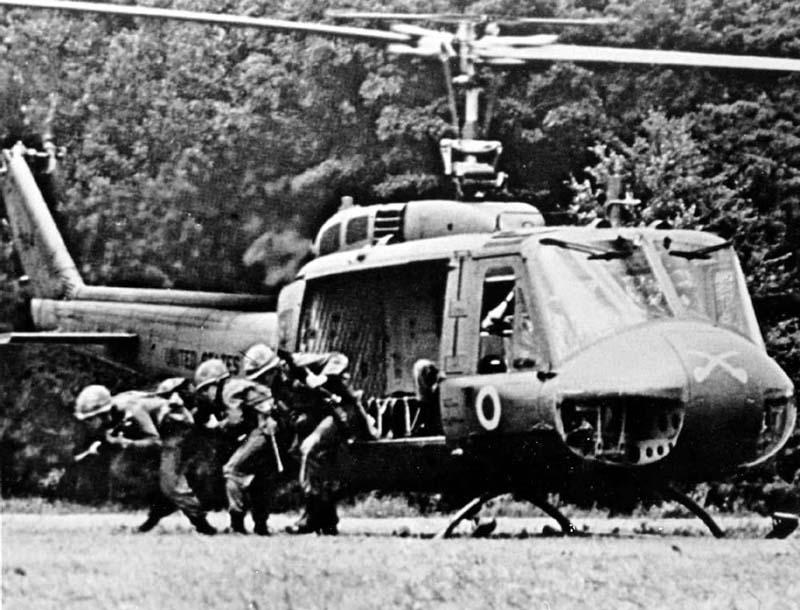
Long Range Surveillance units, or units with similar type missions, have been deployed during most major US combat operations since their inception, during the early eighties. The 82nd Airborne Division’s 2/17 Cavalry deployed a Long Range Surveillance type unit, during Operation Urgent Fury. Operation Desert Storm allowed a number of Long Range Surveillance units the opportunity to deploy, for their first combat missions. Long Range Surveillance teams from various Long Range Surveillance Units assigned to VII Corps and XVIII Abn Corps were infiltrated deep into Iraqi territory. The teams reported on Iraqi troop movements, weather conditions on the ground and any other information deemed pertinent.
